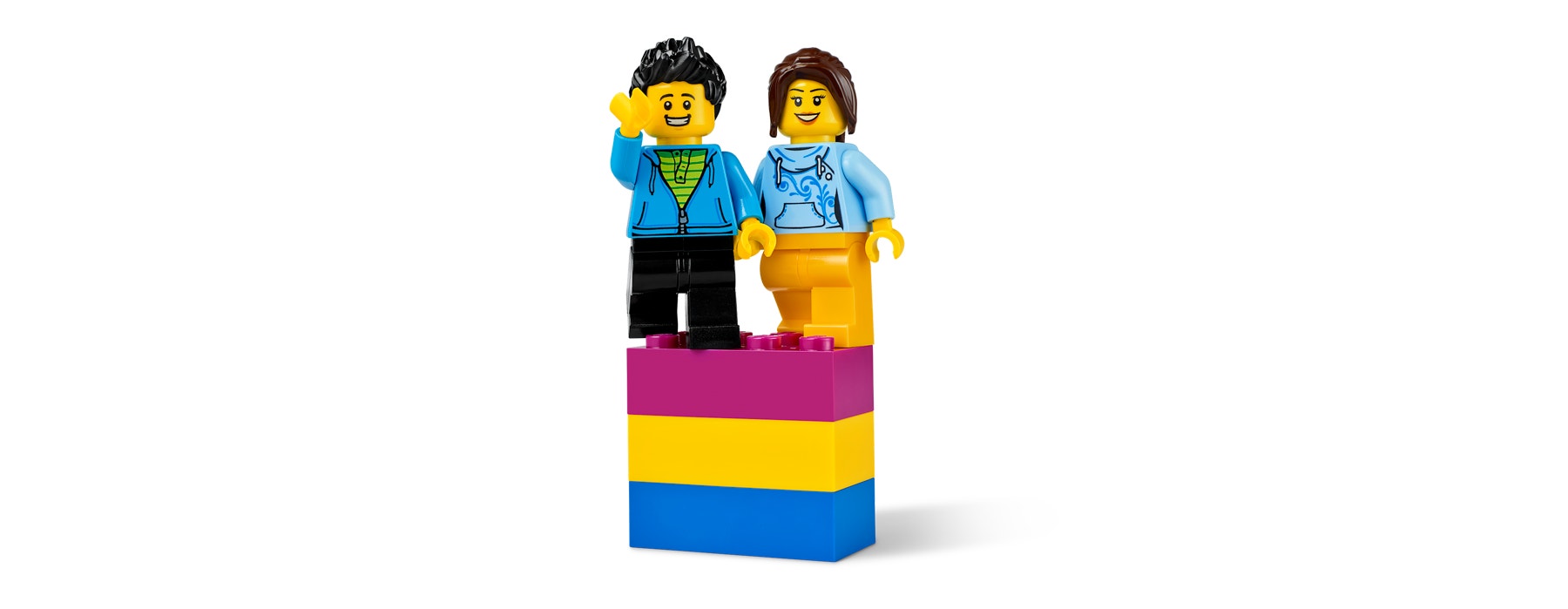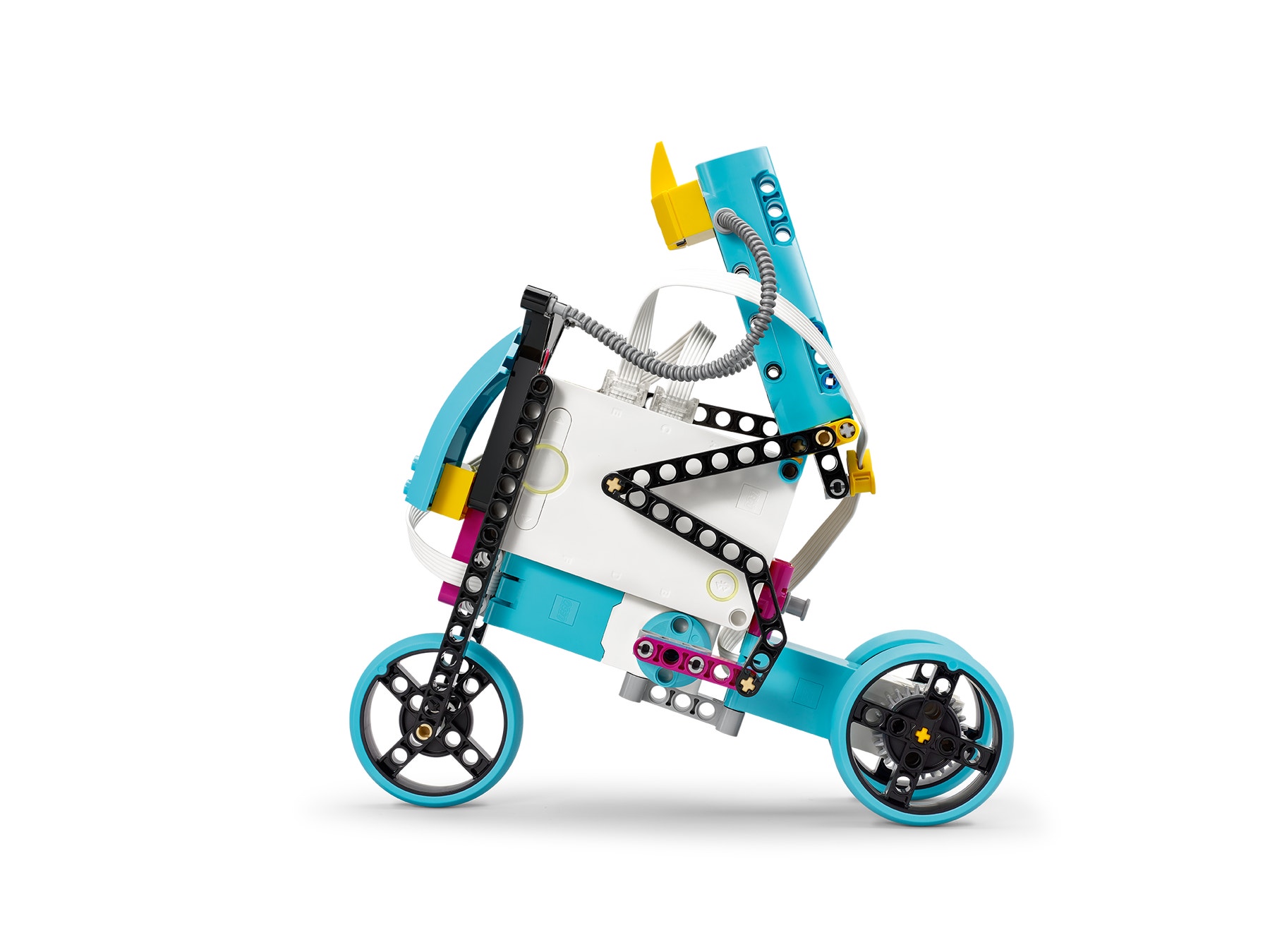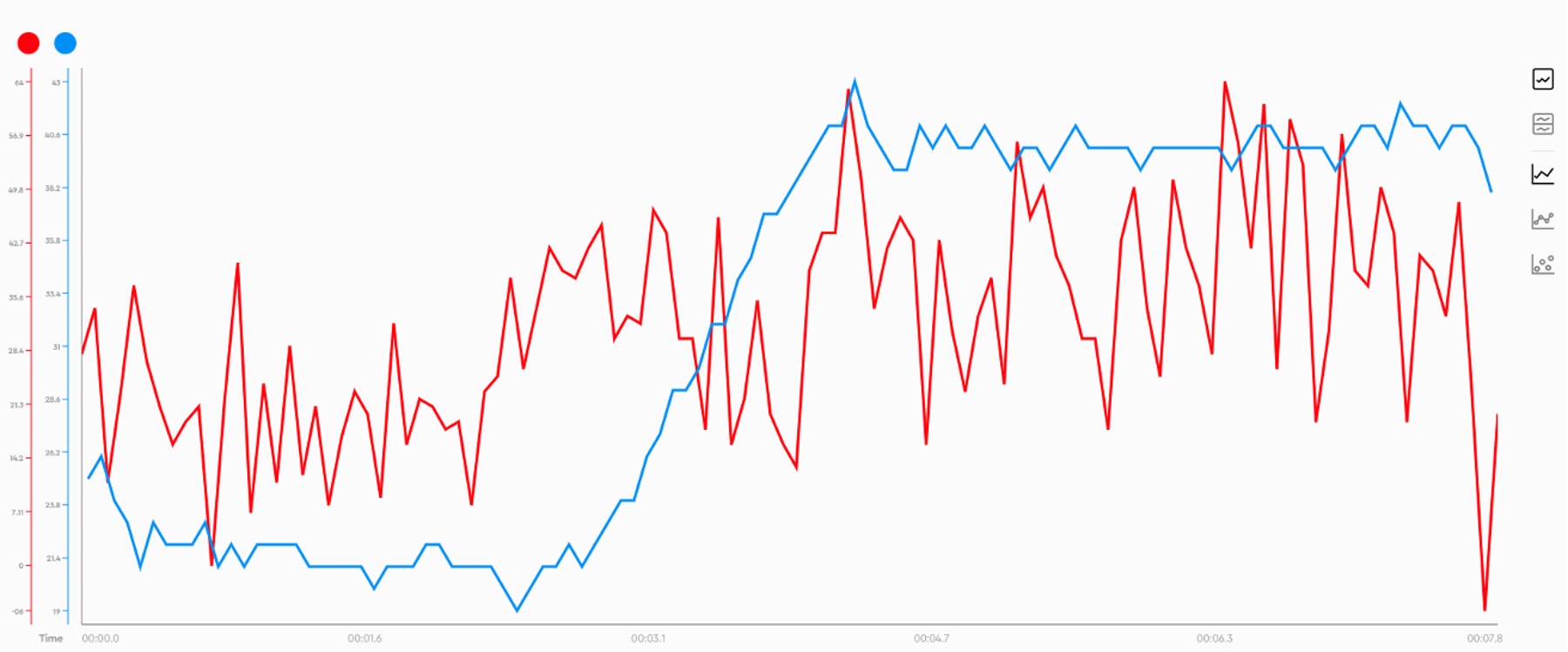This Is Uphill
Graph energy consumption to gain potential energy.

Engage
(Before the Lesson (20 Min.))
- The topic of this lesson is energy transfer. Your pupils will learn that in order for a cyclist to maintain a constant speed (i.e. constant kinetic energy) when going uphill (i.e. to gain potential energy), they must input energy. This lesson uses a model of an electric bike. Its energy will come from an increase in its motor's power consumption. In a real-life situation, this energy would come from the extra effort from the cyclist.
- Use various materials to engage your pupils on the topic of energy transfer.
Ignite a Discussion
Start a discussion by asking questions related to the lesson. Here are a few suggestions:
- What will happen to your speed as you go up a hill?
- What type of energy do you gain as you’re going up a hill?
- What must you do in order to maintain a constant energy level when you’re cycling?
- Why do you think this is the case?
Have your pupils write down their thoughts as a hypothesis.
Explore
(During the Lesson, 30 Min.)
- Have your pupils build a smart bike that can record its motor's power consumption and the angle of a slope. They can create their own models or follow the building instructions in the app to build the Smart Bike model.
- Ask your pupils to try out their models on a flat surface using the program suggested in the SPIKE App.
- Tell them to look at the graph and document what they see:
- Why do the two plotted lines look the way they do?
Explain
(During the Lesson, 45 Min.)
- Have your pupils repeat the experiment using a slope. They can create this using the SPIKE Prime box and a plank.
- Ask your pupils to explain how the smart bike's motor is adding energy to maintain a constant speed.
- Have them explain the relationship between the motor's power consumption and the angle of the slope.
- Tell them to export their data as a CSV file so they can manipulate it using other software if they wish.
Elaborate
(After the Lesson, 25 Min.)
- If your pupils still have access to their SPIKE Prime Sets, have them complete the tasks given in the SPIKE App. This will help them to elaborate on their learning with a bit of hands-on activity. Here are some examples:
- Challenge your pupils to create their own paths. Ask them to create paths that include a flat surface and upward and downward slopes.
- Have them trace what they think the graph of the motor's power consumption will look like. Then ask them to run their bike along the path to see if they were right.
- If your pupils don't have access to their sets, have them complete their Inventor Notebooks, or assign one of the extension activities that’s been suggested below. Most of the extension activities can be done using the data that was collected during the hands-on session
- Facilitate a sharing session in which your pupils discuss their thoughts and the results of their experiments. This can be done using whichever method/tool is the most efficient (i.e. in-person or online).
Evaluate
- Give feedback on each pupil's performance.
- To simplify the process, you can use the assessment rubrics that have been provided.
Assessment Opportunities
Teacher Observation Checklist
Establish a scale that suits your needs, for example:
Partially accomplished
Fully accomplished
Overachieved
Use the following success criteria to evaluate your pupils' progress:
- The pupils are able to program a device that logs data on a line graph.
- The pupils are able to interpret the values coming from the line graph.
- The pupils are able to use appropriate terminology to explain the transfer of energy.
Self-Assessment
Have each pupil choose the brick that they feel best represents their performance.
- Blue: I’m able to graph data using the program that’s been provided in the app.
- Yellow: I’m able to create my own line graph and explain my results.
- Violet: I've created new experiments on my own.
Peer Feedback
Encourage your pupils to provide feedback to one another by:
Having one pupil use the coloured brick scale above to score another pupil’s performance.
Asking them to present constructive feedback to one another so that they can improve their group’s performance during the next lesson. This is an excellent opportunity to use videoconferencing tools or blog posting tools in a blended learning scenario.

Differentiation
Simplify this lesson by:
- Taking the time to describe what a direct proportion is
- Asking your pupils to give examples of direct proportions from their daily lives
Take this lesson to the next level by:
- Asking your pupils to build their own smart bikes
- Challenging your pupils to create their own scientific protocols and decide which value(s) they'll track and how they'll do it

Tips
Building Tips

Coding Tips
This lesson is designed to be played while the hub is connected through USB or Bluetooth. While connected, the data collected by the Hub is streamed directly to your device and traced in real-time on the Line Graph.
Main Program

Science Data Tips
Here’s an example of the data your pupils can expect from this experiment.

Extensions
Maths Extension
To incorporate the development of maths skills:
- Have your pupils realise that the two values graphed during this lesson are recorded over time (i.e. angle over time and the motor's power over time).
- Have your pupils perform data manipulations, both manually and using online tools, to trace the graph of the motor's power over the angle of the slope.
Note: This will require additional time.

Literacy Extension
To incorporate the development of literacy skills:
- Have each pupil write a science enquiry journal, documenting their hypothesis and conclusions as a scientist would.
- Have each pupil write a newspaper article reporting on a major new scientific discovery. Ask them to document the scientific protocols used as a journalist would.
- Provide examples of scientific newspaper articles and science enquiry journals. Ask your pupils to compare the two and document their observations.
Note: This will require additional time.

Career Links
The pupils who enjoyed this lesson might be interested in exploring these career pathways:
- Health Science
- Education & Training
- Science, Technology, Engineering and Mathematics (Science and Maths)
- Transportation, Distribution & Logistics
Teacher Support
Pupils will:
- Perform an experiment that illustrates the transfer of electrical energy to potential energy
- LEGO® Education SPIKE™ Prime Set
- Device with the LEGO Education SPIKE App installed
- A plank or something that can be used to create a slope
DFE Science Programmes of Study KS3
Experimental skills and investigations - 3
• select, plan and carry out the most appropriate types of scientific enquiries to test predictions, including identifying independent, dependent and control variables, where appropriate
Experimental skills and investigations - 5
• make and record observations and measurements using a range of methods for different investigations; and evaluate the reliability of methods and suggest possible improvements
Changes in systems - 1
• energy as a quantity that can be quantified and calculated; the total energy has the same value before and after a change
Changes in systems - 3
• using physical processes and mechanisms, rather than energy, to explain the intermediate steps that bring about such changes.
DFE Maths Programmes of Study KS3
Reason mathematically - 1
• extend and formalise their knowledge of ratio and proportion in working with measures and geometry, and in formulating proportional relations algebraically
Ratio, proportion and rates of change - 7
• relate the language of ratios and the associated calculations to the arithmetic of fractions and to linear functions
Ratio, proportion and rates of change - 8
• solve problems involving direct and inverse proportion, including graphical and algebraic representations
Ratio, proportion and rates of change - 9
• solve problems involving percentage change, including: percentage increase, decrease and original value problems and simple interest in financial mathematics
DFE English Programmes of Study KS3
Writing - 1
Pupils should be taught to:
• write accurately, fluently, effectively and at length for pleasure and information through:
• writing for a wide range of purposes and audiences, including:
• summarising and organising material, and supporting ideas and arguments with any necessary factual detail
DFE Computing Programmes of Study KS3
Subject Content – 1
• design, use and evaluate computational abstractions that model the state and behaviour of real-world problems and physical systems
Subject Content – 3
• use two or more programming languages, at least one of which is textual, to solve a variety of computational problems; make appropriate use of data structures [for example, lists, tables or arrays];**DFE Design & Tecnology Programmes of Study KS3**
Design - 1
• use research and exploration, such as the study of different cultures, to identify and understand user needs
Design - 2
• identify and solve their own design problems and understand how to reformulate problems given to them
Design – 3
• develop specifications to inform the design of innovative, functional, appealing products that respond to needs in a variety of situations
Design – 4
• use a variety of approaches [for example, biomimicry and user-centred design], to generate creative ideas and avoid stereotypical responses
Design – 5
• develop and communicate design ideas using annotated sketches, detailed plans, 3-D and mathematical modelling, oral and digital presentations and computer-based tools
Evaluate – 3
• test, evaluate and refine their ideas and products against a specification, taking into account the views of intended users and other interested groups
Technical knowledge - 4
• apply computing and use electronics to embed intelligence in products that respond to inputs [for example, sensors], and control outputs [for example, actuators], using programmable components [for example, microcontrollers].




